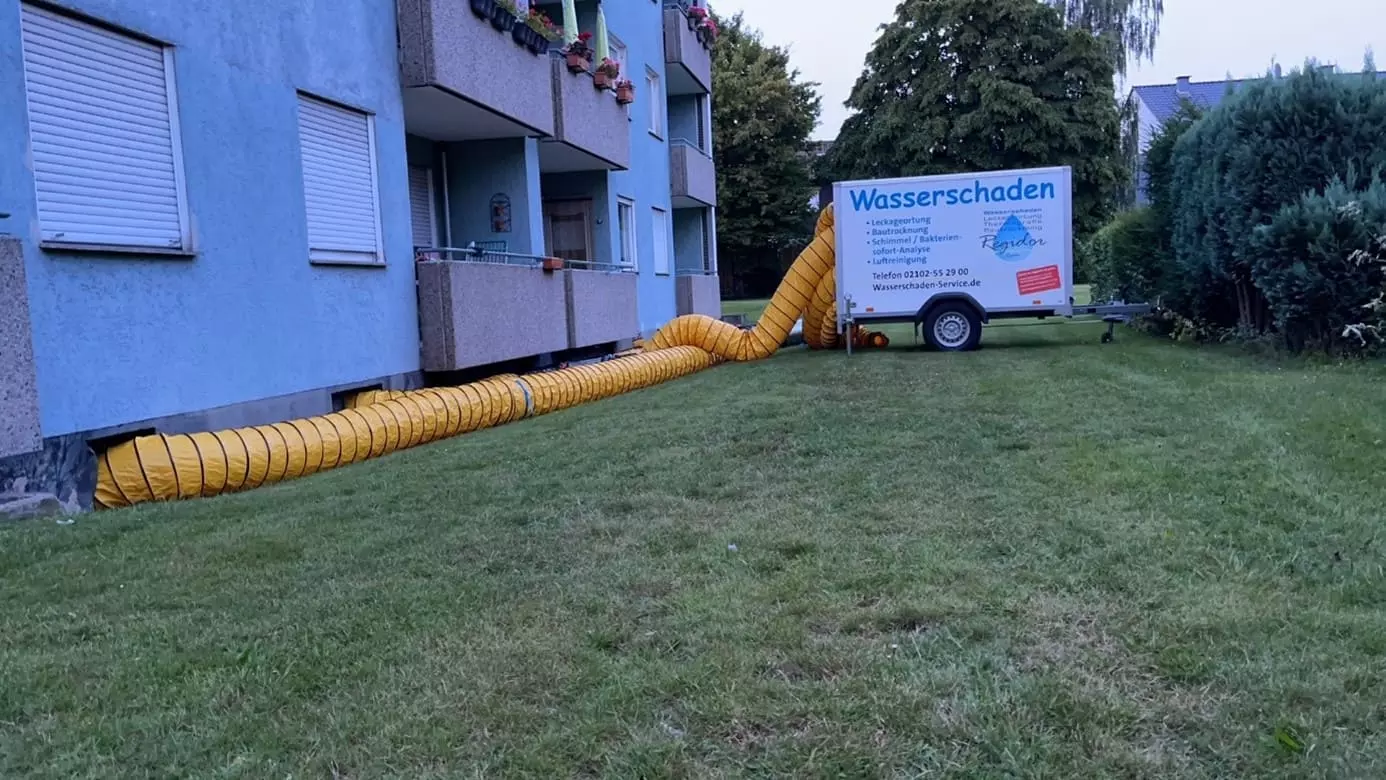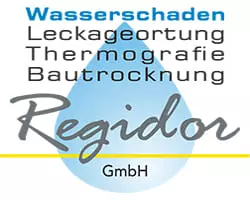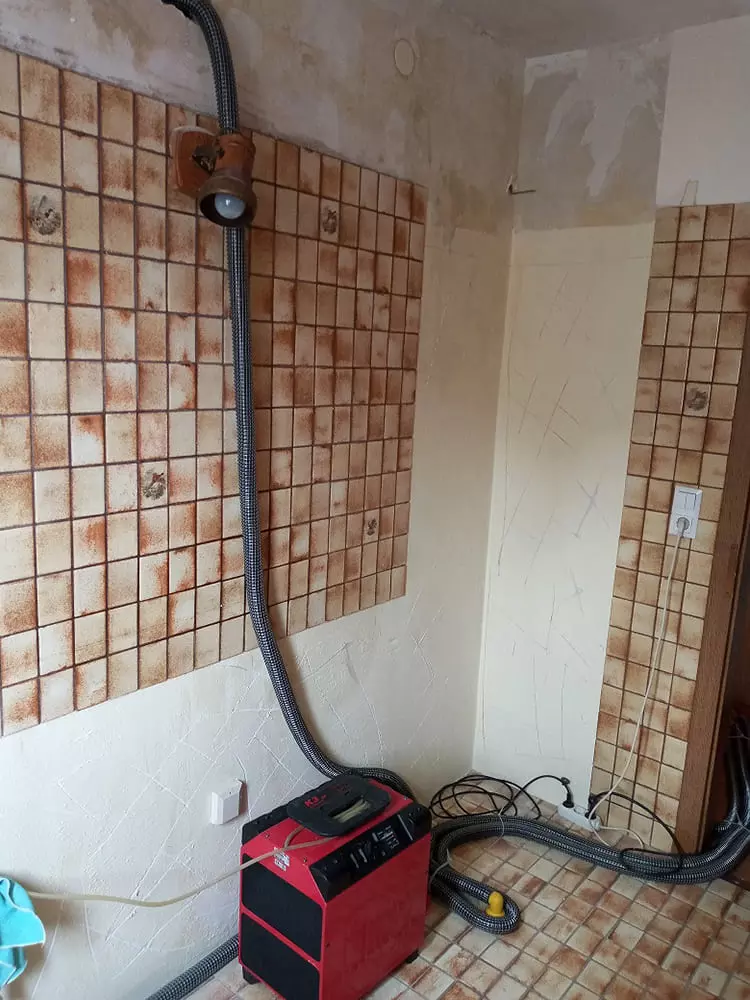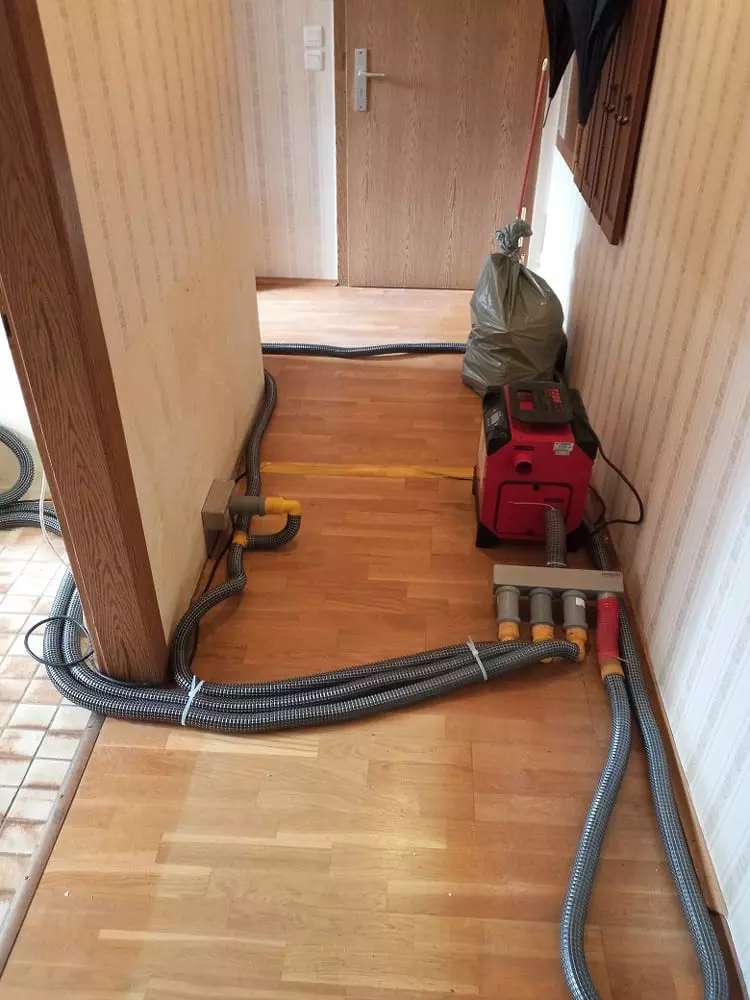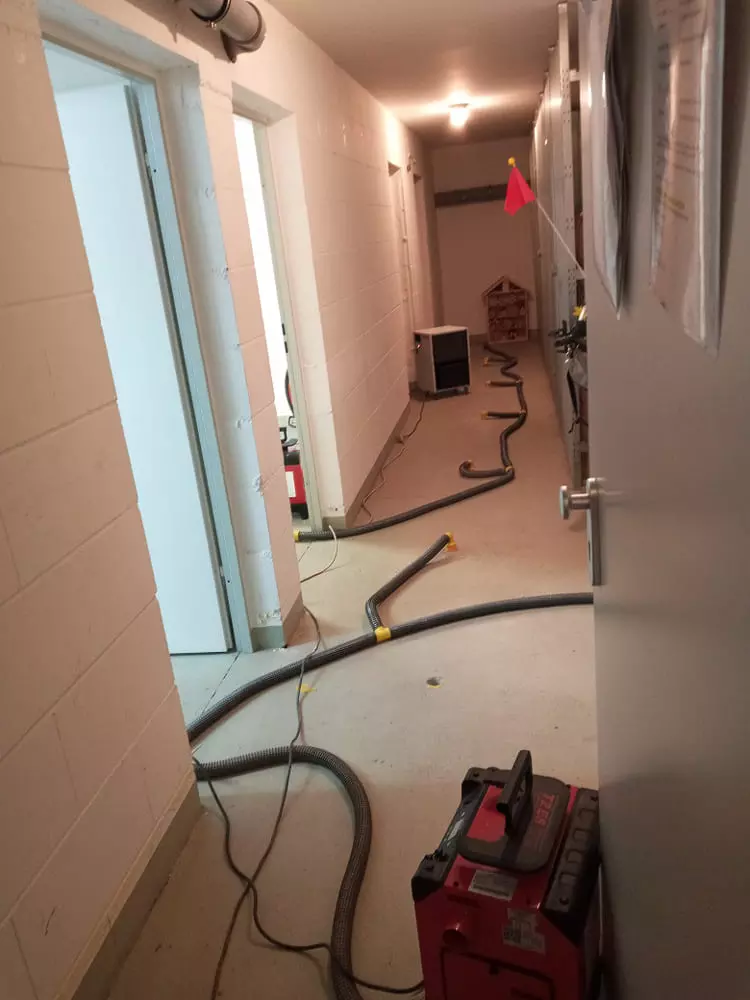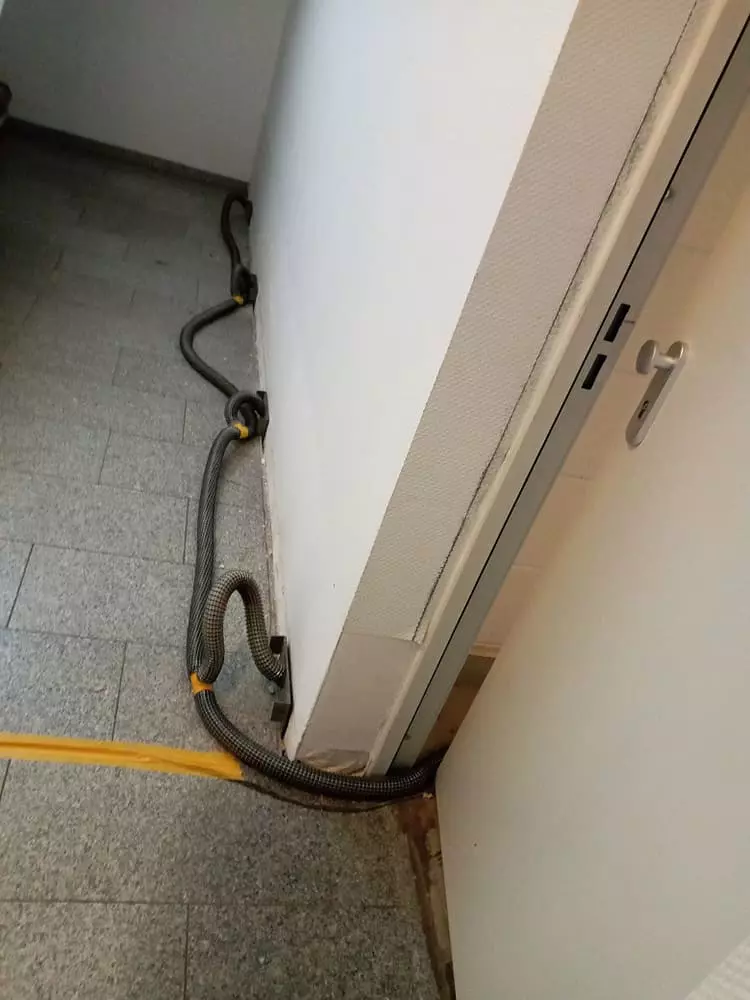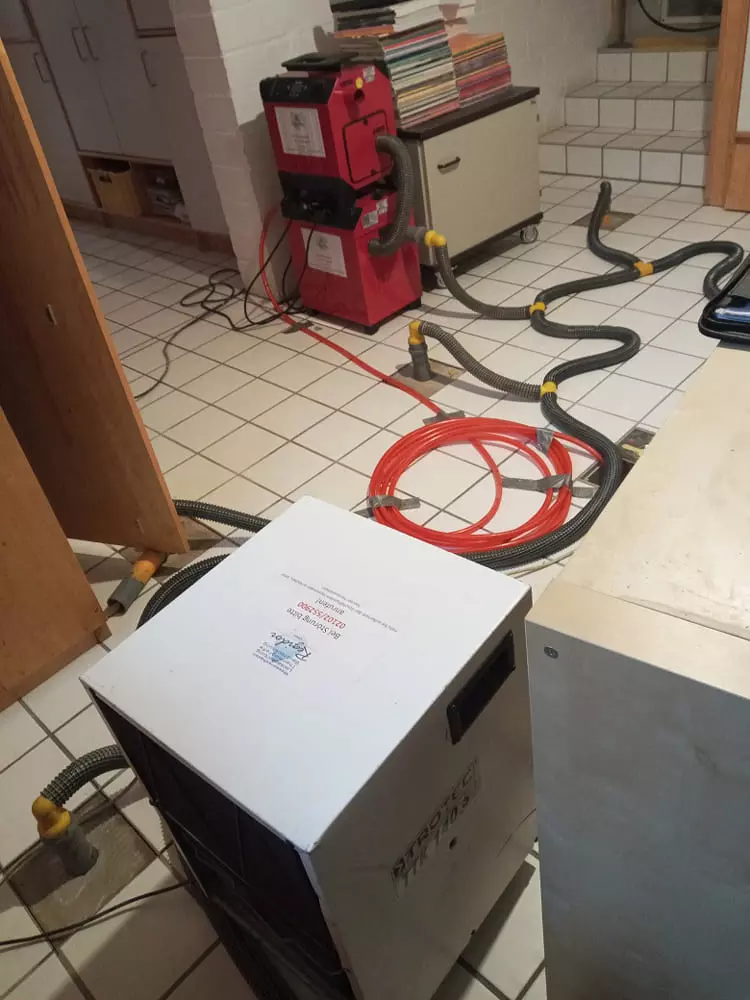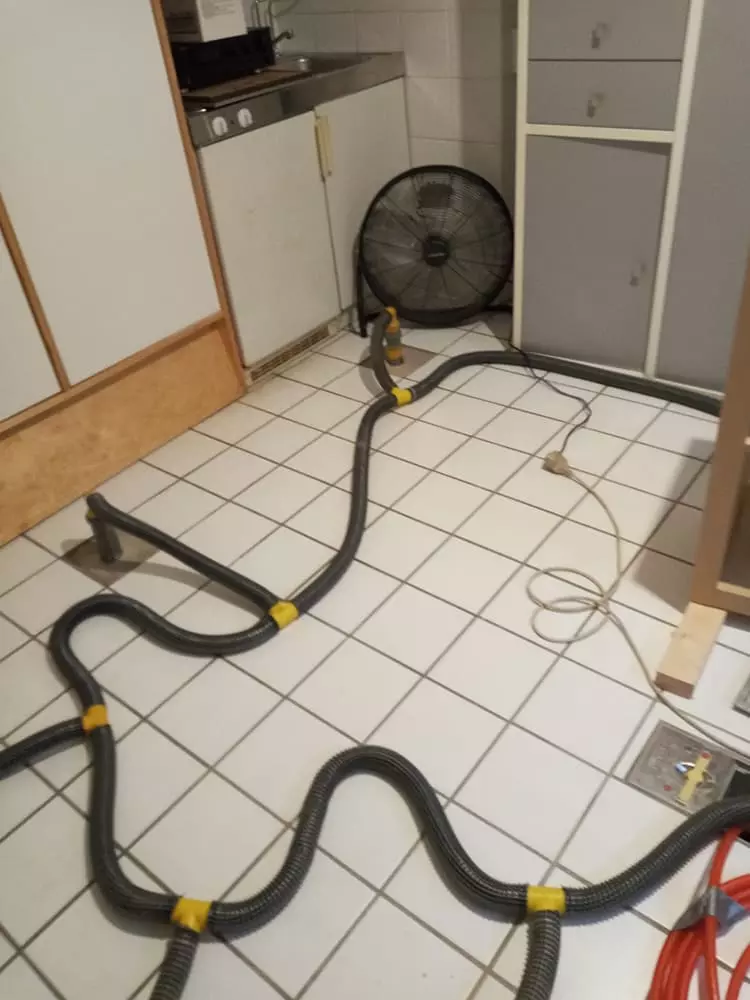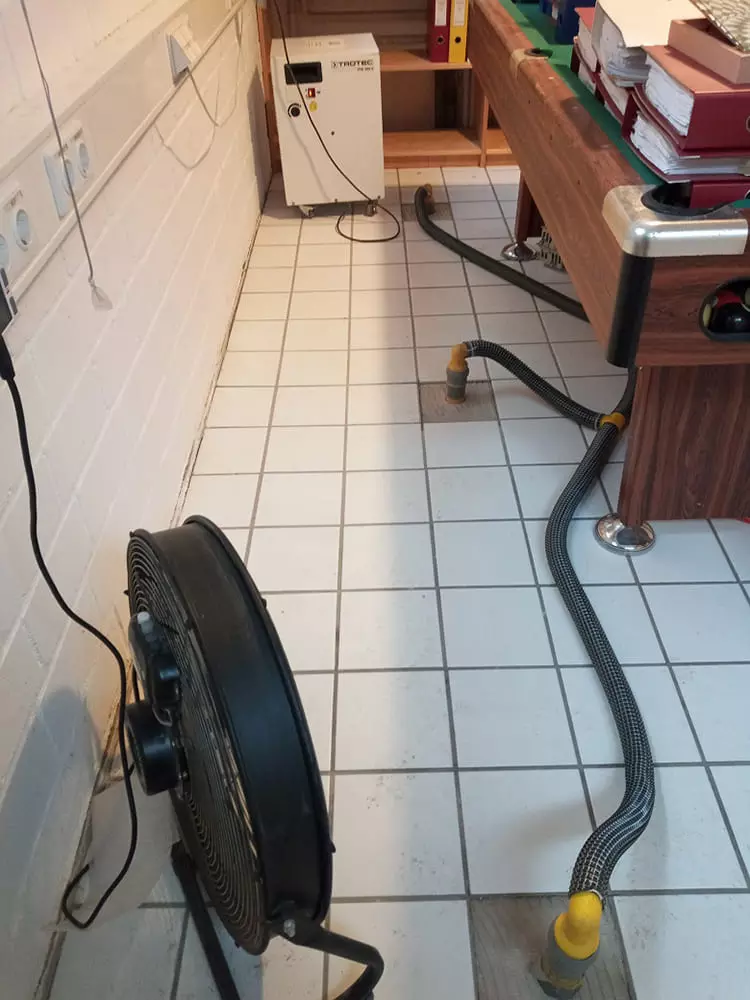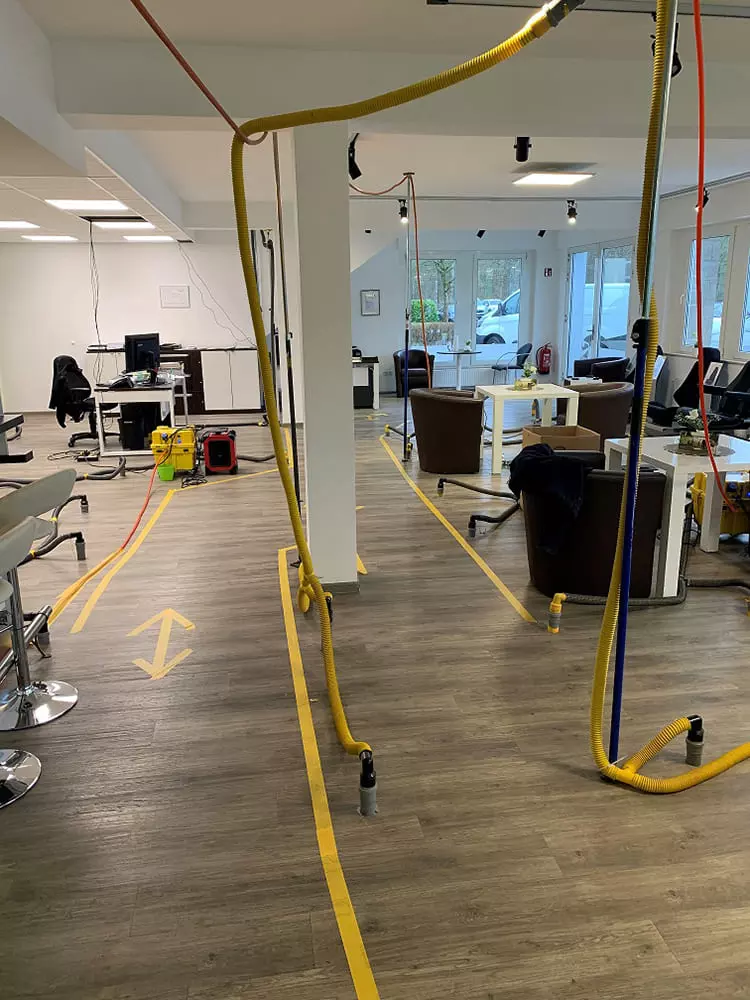Building dehumidification - Efficient dehumidification of various building components
In the event of water damage, it has to be done quickly, because modern building materials and cavities, with intensive insulation at the same time, have to be taken care of quickly, otherwise it becomes costly. It is important to act as quickly as possible in order to give germs and spores no chance.
This is what the technicians at Regidor GmbH specialise in, in order to act in a damage-reducing manner. Since the philosophy of our company is based on competent advice for water damage repair to our customers, Regidor GmbH attaches great importance to the fact that all our employees are certified specialists for water damage repair.
After a repair has been carried out, measures for drying out the building are usually on the agenda in the case of water damage. We carry these out professionally and expertly. Depending on which building materials and areas are affected by the water damage, we choose the appropriate type of drying to ensure efficient drying.
There are various drying methods available.
There are various options here, e.g.
- Vacuum drying and dehumidification of layered floor constructions
- Dehumidification
- Drying of insulation in beam ceilings and walls
- Dehumidification through the use of a foil tent/air cushion
- Pressure drying
Turbine during vacuum drying
The illustration shows a turbine vacuum drying a floor construction with water separator and Flexifilter.
Adsorption dryer and a turbine in one housing
A combi unit can also be used for shaft drying (see illustration). This comprises an adsorption dryer and a turbine in one housing. Due to its extremely low noise level, it is also particularly suitable for use in inhabited rooms.
Alternative to vacuum drying
Alternatively to vacuum drying, pressure drying can also be carried out. However, this is not often used.
Technique for drying the insulation
This technique for drying insulation in joist ceilings and stud walls is simple - it aims to achieve a high air flow rate in the damp construction. The dry air is fed from the dryer directly into the construction.
Drying process
To speed up the drying process, a limited area where the damage occurred can be covered with plastic film. The dryer blows dry air under the plastic sheeting and creates a cushion of air with a very dry climate that is concentrated on the area with the water damage.
Installation of the dryer
A dryer is placed in the room where damage has occurred. The dryer blows dry air into the entire room, drying all surfaces.
High-performance mobile adsorption dryer for demanding large-scale use
The RL-71R is ideal for dehumidifying large new buildings as well as for refurbishments or drying in emergency situations such as fires and floods.
The RL-71R has a dry air flow of up to 2500 m³ /h and is equipped with an auxiliary heater. Heavy current 63 A is to be provided on site. The mobile adsorption dryer convinces with its user-friendliness and contains all components required for large projects. The unit can be set up indoors and outdoors. The RL-71R dryer is ideal for large, demanding drying projects, as well as construction drying. It can be lifted with a forklift truck. Easy commissioning, handling and monitoring. Operated via a touch panel. Energy efficient: Can recover 85 % of the heat thanks to patented technology. High capacity - up to 2500 m³/h at 400 Pa ext. regeneration airflow.
Due to the trailer, the adsorption dryer is ready for use anywhere in the event of a disaster. Ideal for large, demanding drying projects as well as construction drying.
